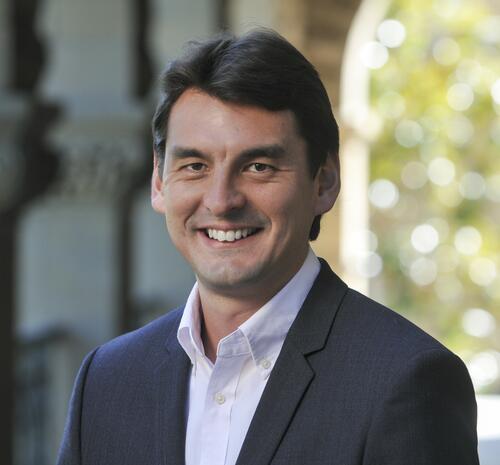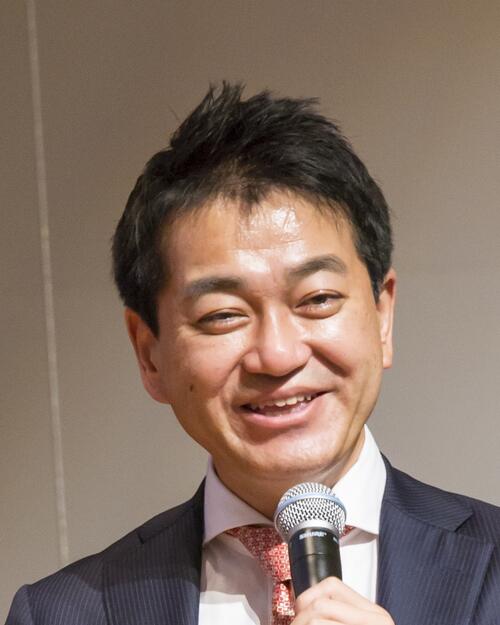Stanford-Hiroshima Collaborative Program on Entrepreneurship: Reflections
Last fall, SPICE provided me an opportunity to design and organize its first post-collegiate online course. The Stanford-Hiroshima Collaborative Program on Entrepreneurship (SHCPE’s Japanese-friendly pronunciation, “shu-ppe”) was conducted in collaboration with the Hiroshima Business and Management School (HBMS) at the Prefectural University of Hiroshima (PUH). HBMS offers the only Master of Business Administration (MBA) program in Japan’s western region of Chugoku and Shikoku. Interacting with amazing individuals on both sides of the Pacific, this unique experience brought me priceless moments.
Innovation in Itself
SHCPE, a course to help nurture entrepreneurial thinking, was an innovation in itself. The program was born out of Governor Hidehiko Yuzaki’s vision to design and implement a social challenge to help accelerate Hiroshima’s regional growth. Harnessing the resources of Stanford and Silicon Valley, the new online class was launched to empower the students and to revitalize the business sector in Hiroshima. SPICE created the curricular content and HBMS provided the learning environment designed to maximize the academic experience for the students. As the course’s curriculum designer, I leveraged the expertise of my fellow SPICE online instructors and applied design thinking, a method developed by Stanford faculty, practiced widely in Silicon Valley, and popularized globally to understand the end-user, challenge our assumptions, and reconstruct alternative perspectives to generate innovative ideas.
Bridging Silicon Valley and Hiroshima
SHCPE’s 18 MBA students in Hiroshima met every Saturday morning for three hours from September 28 to November 16, 2019 to connect online with Japanese entrepreneurs, professionals, and scholars in Silicon Valley. The first virtual class focused on discussing the mindset expected for the course as well as the conceptual framework. In the following six weeks, we welcomed guest speakers who shared their diverse experiences. What were their prior experiences, expertise, and insights? What resources did they have to achieve their goals? What were the major promoters and impediments to their journeys? Through active exploration of these questions, the students were exposed to real-life case studies to analyze Silicon Valley’s ecosystem and think critically about entrepreneurial competence and qualification. The course was conducted entirely in Japanese.
The guest speakers engaged and energized the HBMS students. Akira Onozato spoke about the evolution of Silicon Valley over the past three decades. His diverse experiences as a serial entrepreneur painted a rich picture of the San Francisco Bay Area’s growth cycle. Akira’s story provided a great segue to Rika Nakazawa’s lecture on the mindset and culture surrounding startups. Rika highlighted grit, tolerance of failure, and branding as important assets of successful entrepreneurs. Dr. Fumiaki Ikeno spoke on the landscape and trends in the medical device industry. He pointed to Japan’s declining productivity and economic competitiveness and discussed the persistent fear of failure as a major impediment to promoting entrepreneurship. As an active venture capitalist on both sides of Pacific, Seiji Miyasaka explained the funding schemes and financial cycles surrounding the investment climate of startups. Using case studies, he highlighted the role of investors who act as coaches to aspiring entrepreneurs. Tatsuki Tomita’s definition of a startup was shaped by his own experiences of starting multiple companies. His discussion of the pivot pyramid provided a visual guideline for how startups can experiment with ideas and find their product-market fit. Tasha Yorozu shared her expertise as a legal counsel, walking through the steps of starting a business in Silicon Valley. Along with Jumpei Ishii, a visiting legal counsel from Japan, Tasha further discussed their observations of successful startup practices and common pitfalls. The diversity of SHCPE guests represented the vibrant Silicon Valley community.
Active Learning and Knowledge Construction
While these professionals provided informative accounts of their expertise, SHCPE’s ultimate goal was to help each HBMS student to develop a mindset of an active learner. The MBA students were constantly challenged to think critically about the weekly theme, and work in pairs or teams to discuss assigned topics. The experience offered a dynamic and interactive learning environment for the Japanese students in their 30s, 40s, and 50s who had been accustomed to traditional lecture-style formats. SHCPE’s curriculum based on design thinking adopted an inquiry-based learning pedagogy, which engaged every student through weekly assignments and in-class discussions. During the first class, the students were informed that SHCPE would not teach them entrepreneurship. Instead, this course would provide them with the opportunity to reconstruct their knowledge of entrepreneurship and innovation based on what they observe, hear, and feel during the class. In addition, the students were required to provide feedback after each class, which was utilized to redesign the lesson plans for the following week.
This active and experiential mindset was envisioned by Dr. Gary Mukai, Director of SPICE and a renowned Japan–U.S. educator. “At SPICE, we provide students an opportunity to own their learning experience. Education is about empowering the students,” Dr. Mukai asserts. This tradition comes from the American philosopher and education reformist John Dewey, who said, “I believe finally, that education must be conceived as a continuing reconstruction of experience; that the process and the goal of education are one and the same thing.” SHCPE’s inaugural curriculum aimed to implement this philosophy through direct, real-life interaction with founders and movers in Silicon Valley, and through the iterative process to deconstruct and reconstruct their knowledge on entrepreneurship.
Innovation Through Education
What SHCPE aimed to achieve was innovation through education. The weekly three-hour online class was roughly divided into three parts: guest lecture, class discussion, and interview. Prior to the interview session, a pre-assigned team of three students met with me in a separate online room and brainstormed their interview questions. For the majority of the students, it was their very first time to formally interview a person, and the experience brought a novel learning opportunity to think critically about entrepreneurial competence. Many commented on the challenge and the excitement of getting to know strangers by engaging them in a thoughtful conversation. The weekly interview highlighted the philosophy, aspiration, and raw sentiments of the guest speakers, evoking passion, energy, and empathy among the students.
 SHCPE 2019 team with Ken-ichi Nakamura, President of the Prefectural University of Hiroshima
SHCPE 2019 team with Ken-ichi Nakamura, President of the Prefectural University of Hiroshima
SHCPE strived to adopt the pedagogy of active learning and the toolsets of design thinking to implement Governor Yuzaki’s vision of “learning innovation.” The course appears to have succeeded in helping to realize his vision as one student reflected upon his experience:
This class does not intend to offer answers [to the question what entrepreneurship is]. Instead, it urges the students to constantly think on their own and engage themselves in learning. This is very different from the Japanese traditional pedagogy, which relies on rote memorization and mechanical process of practice problems. This class highlighted the fundamental difference in the philosophy of how we look at education, and I enjoyed this eye-opening experience.
SHCPE ’19 concluded with much enthusiasm. SPICE looks forward to continuing its partnership with HBMS to build upon the invaluable lessons learned from the inaugural program. With Stanford e-Hiroshima, an online course for high school students managed and taught by my colleague Rylan Sekiguchi, SPICE will continue its efforts to empower the people in Hiroshima.
Acknowledgement
I am greatly indebted to Dr. Gary Mukai for providing me this invaluable opportunity. Special thanks go to Carey Moncaster, Dr. HyoJung Jang, Jonas Edman, Meiko Kotani, Naomi Funahashi, Rylan Sekiguchi, Sabrina Ishimaru, Dr. Tanya Lee, and Waka Takahashi Brown for their valuable comments on the preliminary curriculum. I thank all of my colleagues at SPICE for their support and encouragement throughout the process.
My special gratitude goes to Akira Onozato, Dr. Fumiaki Ikeno, Jumpei Ishii, Rika Nakazawa, Seiji Miyasaka, Tatsuki Tomita, and Tasha Yorozu who took the time out of their busy Friday evening to participate in the virtual classroom. Their contagious enthusiasm energized the students.
Last but not least, I would like to express my deep appreciation to my collaborators at HBMS. I thank Professor Katsue Edo for his hard work and commitment to implement the program, Professor Yasuo Tsuchimoto for his technical expertise and dedication to administer the distance-learning, Professor Narumi Yoshikawa for supporting in-class discussions, and Kazue Hiura, Yoshihiko Oishi, and Kenji Okano for their capable assistance and thoughtful arrangements. Last but not least, my heartfelt congratulation goes to the 18 MBA students who successfully completed SHCPE ’19. The inaugural class will always have a special place in my heart.
To stay informed of news about Stanford e-Japan and SPICE’s other programs, join our email list and follow us on Facebook, Twitter, and Instagram.
Related article:



